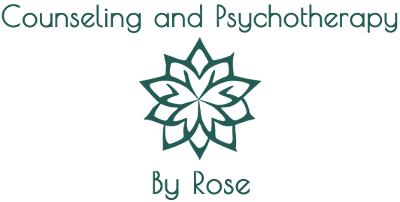From Surviving to Thriving: how EMDR can help you put the past in the past

Something devastating happened to you. Maybe it was yesterday. Maybe it was fifty years ago. You got through it…somehow, but it keeps haunting you. Small, everyday things can remind you of it, bringing back images, sensations, feelings, sounds, beliefs about yourself. You find yourself overreacting to things, seeing them through a lens related to your experience. You feel in your gut that you are bad, guilty, powerless, or in danger, even when your head tells you otherwise. You tell yourself to move on, but somehow your present is clouded with the devastating experience in your past.
You are not alone.
Whether it was a rough breakup, childhood abuse, panic attacks, being a victim of a crime, or countless other possibilities, you may have experienced a trauma. Traumatic experiences can haunt us in these exact ways and, unfortunately, do not always just disappear with time.
Traumatic experiences do not get processed like normal memories in our brains. The memories get stored along with all that we were experiencing at the time – the emotions, fear, sensations, images, and felt beliefs about ourselves. When we remember them, we do so with a shot of pain – a pain that makes us shy away from thinking about them, and a pain that can reinforce the negative belief about ourselves that involuntarily attached to that experience. Because there is so much charge on these memories, other similar experiences tend to magnetically attach to them and reinforce the worst part of the experience for us. Soon, everyday triggers pull up whole networks of memories that reinforce each other, giving us little hope of seeing things in our present for what they are. This can look like depression, anxiety, numbness, or low self-esteem.
Sadly, talking about a traumatic experience can sometimes make it worse, either flooding us with emotion or forcing us to numb out and tell our story like it happened to someone else. Therapists who are not trained to treat trauma may inadvertently push their clients into one of these states, which may push the traumatic memories even deeper, rather than releasing them.
Trauma processing is an area where EMDR (Eye Movement Desensitization and Reprocessing) can be incredibly powerful. EMDR is a fully-conscious mind-body treatment that allows your own mind and body to access the memory without getting overwhelmed, release the distress that charges the memory, and integrate those powerful memories into your knowledge of the world and yourself. Not only can the memory become much less distressing, but the negative beliefs about yourself and the world tend to naturally, organically transform. They are no longer overly influenced by traumatic experiences, which gives you the space to really live in the present. This is why EMDR is one of the only treatments designated to be effective for post-traumatic stress by the American Psychiatric Association and the International Society for Traumatic Stress Studies. It has also been found effective by the Department of Veterans Affairs and Department of Defense, the United Kingdom Department of Health, the Israeli National Council for Mental Health, and many other international health and governmental agencies.
As an EMDR clinician, I am constantly amazed by the power of EMDR to heal old wounds. I have seen clients find lasting relief from debilitating PTSD with recurring nightmares, daily panic attacks, a general numbness toward life, depression, excessive grief, phobias, emotional volatility in relationships, low self-esteem, loss of purpose, and much more. If you are interested in trying EMDR, I encourage you to find an EMDRIA-approved clinician in your area. If you are in the Los Angeles or Orange County area in California, I would be happy to work with you. Please feel free to contact me at (424) 571-2273, [email protected], or make an appointment via my website, https://counselingsocal.com. I wish you healing and growth.

